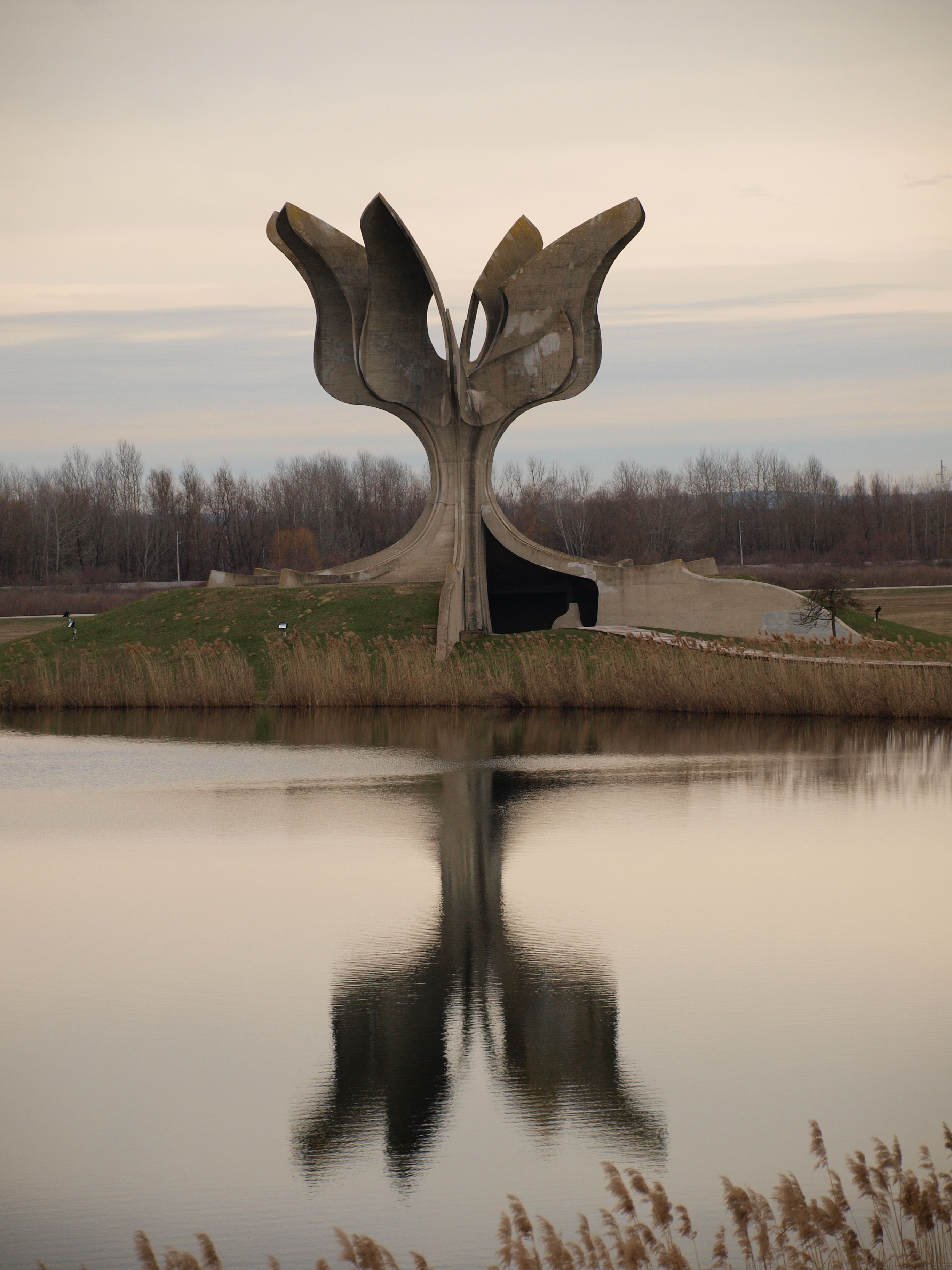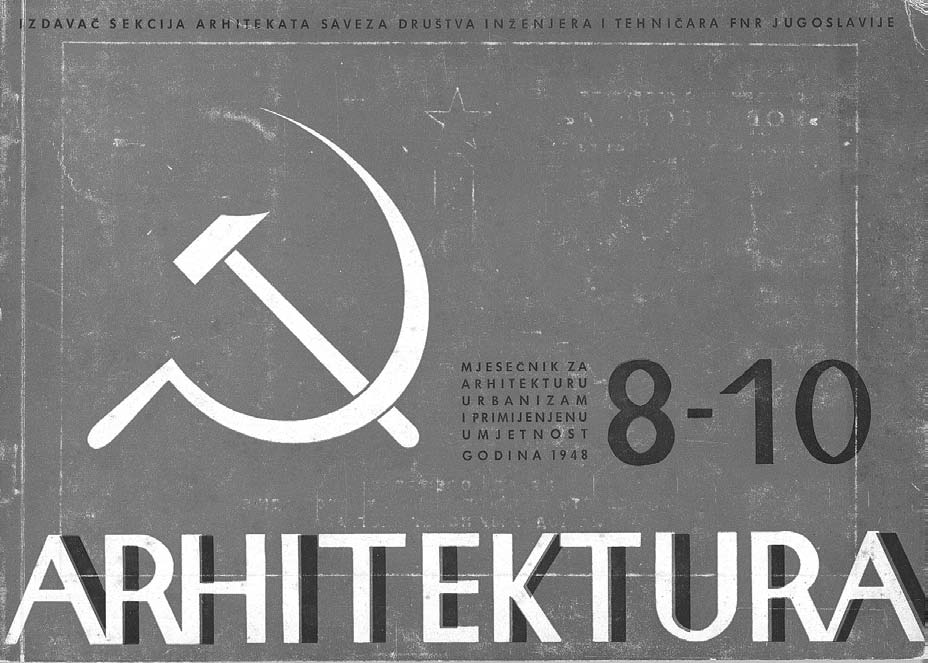Architecture In Yugoslavia on:
[Wikipedia]
[Google]
[Amazon]
 The architecture of Yugoslavia was characterized by emerging, unique, and often differing national and regional narratives. As a socialist state remaining free from the
The architecture of Yugoslavia was characterized by emerging, unique, and often differing national and regional narratives. As a socialist state remaining free from the
 Immediately following the Second World War, Yugoslavia's brief association with the
Immediately following the Second World War, Yugoslavia's brief association with the
 Yugoslav architecture, particularly that of monuments, has attracted increased public attention in recent years. In the late 1990s and early 2000s, Belgian photographer Jan Kempenaers released a series of photographs documenting dilapidated World War II monuments and memorials in Yugoslavia. In July 2018
Yugoslav architecture, particularly that of monuments, has attracted increased public attention in recent years. In the late 1990s and early 2000s, Belgian photographer Jan Kempenaers released a series of photographs documenting dilapidated World War II monuments and memorials in Yugoslavia. In July 2018
Spomenik Database
{{Yugoslavia topics Balkan culture Yugoslav culture Architecture related to utopias
Iron Curtain
The Iron Curtain was the political boundary dividing Europe into two separate areas from the end of World War II in 1945 until the end of the Cold War in 1991. The term symbolizes the efforts by the Soviet Union (USSR) to block itself and its s ...
, Yugoslavia adopted a hybrid identity that combined the architectural, cultural, and political leanings of both Western liberal democracy and Soviet communism.
Interwar modernism
Yugoslav architecture emerged in the first decades of the 20th century before the establishment of the state; during this period a number of South Slavic creatives, enthused by the possibility of statehood, organized a series of art exhibitions in Serbia in the name of a shared Slavic identity. Following governmental centralization after the 1918 creation of the Kingdom of Yugoslavia, this initial bottom-up enthusiasm began to fade. Yugoslav architecture became more and more dictated by an increasingly concentrated national authority which sought to establish a unified state identity. Beginning the 1920s, Yugoslav architects began to advocate forarchitectural modernism
Modern architecture, or modernist architecture, was an architectural movement or architectural style based upon new and innovative technologies of construction, particularly the use of glass, steel, and reinforced concrete; the idea that form ...
, viewing the style as the logical extension of progressive national narratives. The Group of Architects of the Modern Movement, an organization founded in 1928 by architects Branislav Đ Kojić Branislav () is a Czech, Croatian, Russian, Slovak, Serbian, Slovene and Ukrainian given name. It also appears in Polish as Bronisław, in Russian as ''Bronislav,'' and Ukrainian as ''Boronyslav.'' The name is derived from the Slavic elements bran ...
, Milan Zloković
Milan Zloković ( Serbian Cyrillic: Милан Злоковић) (Trieste, April 6, 1898 - Belgrade, May 29, 1965) was a Serbian architect. His works epitomised two epochs of architecture in Belgrade.
Biography
Zloković studied in Graz (191 ...
, Jan Dubovy
Jan, JaN or JAN may refer to:
Acronyms
* Jackson, Mississippi (Amtrak station), US, Amtrak station code JAN
* Jackson-Evers International Airport, Mississippi, US, IATA code
* Jabhat al-Nusra (JaN), a Syrian militant group
* Japanese Article Numbe ...
, and Dusan Babic pushed for the widespread adoption of modern architecture as the "national" style of Yugoslavia to transcended regional differences. Despite these shifts, differing relationships to the west made the adoption of modernism inconsistent in Yugoslavia WWII; while the westernmost republics of Croatia and Slovenia were familiar with Western influence and eager to adopt modernism, long-Ottoman Bosnia
Bosnia and Herzegovina ( sh, / , ), abbreviated BiH () or B&H, sometimes called Bosnia–Herzegovina and often known informally as Bosnia, is a country at the crossroads of south and southeast Europe, located in the Balkans. Bosnia and He ...
remained more resistant to do so. Of all Yugoslavian cities, Belgrade
Belgrade ( , ;, ; Names of European cities in different languages: B, names in other languages) is the Capital city, capital and List of cities in Serbia, largest city in Serbia. It is located at the confluence of the Sava and Danube rivers a ...
has highest concentration of modernist structures.
Socialist realism (1945–48)
 Immediately following the Second World War, Yugoslavia's brief association with the
Immediately following the Second World War, Yugoslavia's brief association with the Eastern Bloc
The Eastern Bloc, also known as the Communist Bloc and the Soviet Bloc, was the group of socialist states of Central and Eastern Europe, East Asia, Southeast Asia, Africa, and Latin America under the influence of the Soviet Union that existed du ...
ushered in a short period of socialist realism. Centralization within the communist model led to the abolishment of private architectural practices and the state control of the profession. During this period, the governing Communist Party condemned modernism as "bourgeois formalism," a move that caused friction among the nation's pre-war modernist architectural elite.
Modernism (1948–92)
Socialist realist architecture in Yugoslavia came to an abrupt end withJosip Broz Tito
Josip Broz ( sh-Cyrl, Јосип Броз, ; 7 May 1892 – 4 May 1980), commonly known as Tito (; sh-Cyrl, Тито, links=no, ), was a Yugoslav communist revolutionary and statesman, serving in various positions from 1943 until his deat ...
's 1948 split with Stalin. In the following years the nation turned increasingly to the West, returning to the modernism that had characterized pre-war Yugoslav architecture. During this era, modernist architecture came to symbolize the nation's break from the USSR (a notion that later diminished with growing acceptability of modernism in the Eastern Bloc). The nation's postwar return to modernism is perhaps best exemplified in Vjenceslav Richter's widely acclaimed 1958 Yugoslavia Pavilion at Expo 58
Expo 58, also known as the 1958 Brussels World's Fair (french: Exposition Universelle et Internationale de Bruxelles de 1958, nl, Brusselse Wereldtentoonstelling van 1958), was a world's fair held on the Heysel/Heizel Plateau in Brussels, Bel ...
, the open and light nature of which contrasted the much heavier architecture of the Soviet Union.
Spomeniks
During this period, the Yugoslav break from Soviet socialist realism combined with efforts to commemorate World War II, which together led to the creation of an immense quantity of abstract sculptural war memorials, known today as s''pomenik''.Brutalism
In the late 1950s and early 1960sBrutalism
Brutalist architecture is an architectural style that emerged during the 1950s in the United Kingdom, among the reconstruction projects of the post-war era. Brutalist buildings are characterised by Minimalism (art), minimalist constructions th ...
began to garner a following within Yugoslavia, particularly among younger architects, a trend possibly influenced by the 1959 disbandment of the Congrès Internationaux d'Architecture Moderne
The ''Congrès internationaux d'architecture moderne'' (CIAM), or International Congresses of Modern Architecture, was an organization founded in 1928 and disbanded in 1959, responsible for a series of events and congresses arranged across Europ ...
. Brutalism's growing influence in the nation was most prominently exemplified in reconstruction efforts of Skopje following a destructive 1963 earthquake. Japanese architect Kenzo Tange played a key role in pushing for Brutalism in the city, going so far as to propose a full redesign of Skopje in the style.
The architecture of the city is compiled in Kenzo Tange's Masterplan of Skopje City 1963 with a collaboration led by the UNs teams of international architects.
Decentralization
With 1950s decentralization and liberalization policies inSFR Yugoslavia
The Socialist Federal Republic of Yugoslavia, commonly referred to as SFR Yugoslavia or simply as Yugoslavia, was a country in Central and Southeast Europe. It emerged in 1945, following World War II, and lasted until 1992, with the breakup of Yug ...
, architecture became increasingly fractured along ethnic lines. Architects increasingly focused on building with reference to the architectural heritage of their individual socialist republics in the form of critical regionalism. A notable example of this shift is the Juraj Neidhardt
Juraj Neidhardt (; 15 October 1901 – 13 July 1979) was an Austro-Hungarian and then Yugoslav architect, teacher, urban planner and writer.
Biography
Neidhardt was born in Zagreb on October 15, 1901. He studied architecture at the Academy of F ...
and Dušan Grabrijan Dušan Grabrijan (1899–1952) was a Slovenian-Bosnian architect, architectural theorist and professor.
Grabrijan was a student of Jože Plečnik. In Ljubljana, he is known, for example, for the monument to Slovene Modernist poets Ivan Cankar, Dra ...
's seminal 1957 publication ''Architecture of Bosnia and the way into modernity'' () which sought to understand modernism through the lens of Bosnia's Ottoman heritage.
Growing distinction of individual ethnic architectural identities within Yugoslavia was exacerbated with the 1972 decentralization of the formerly centralized historical preservation authority, providing individual regions further opportunity to critically analyze their own cultural narratives.
In popular culture
 Yugoslav architecture, particularly that of monuments, has attracted increased public attention in recent years. In the late 1990s and early 2000s, Belgian photographer Jan Kempenaers released a series of photographs documenting dilapidated World War II monuments and memorials in Yugoslavia. In July 2018
Yugoslav architecture, particularly that of monuments, has attracted increased public attention in recent years. In the late 1990s and early 2000s, Belgian photographer Jan Kempenaers released a series of photographs documenting dilapidated World War II monuments and memorials in Yugoslavia. In July 2018 MoMA
Moma may refer to:
People
* Moma Clarke (1869–1958), British journalist
* Moma Marković (1912–1992), Serbian politician
* Momčilo Rajin (born 1954), Serbian art and music critic, theorist and historian, artist and publisher
Places
; Ang ...
opened a 6 month exhibition entitled "Toward a Concrete Utopia" that provided visitors with a large collection of images, architectural models, and drawings from Yugoslav architecture from 1948 to 1980. Meanwhile, American researcher and author Donald Niebyl has been working since 2016 to create an online educational resource to explore and catalog the history of Yugoslav monuments and architecture, titled "Spomenik Database".
Gallery
See also
*Architecture of Serbia
The architecture of Serbia has a long, rich and diverse history. Some of the major European style from Roman to Postmodern are demonstrated, including renowned examples of Raška, Serbo-Byzantine with its revival, Morava, Baroque, Classical ...
* Architecture of Kosovo
The architecture of Kosovo dates back to the Neolithic period and includes the Copper, Bronze and Iron Ages, Antiquity and the Medieval period. It has been influenced by the presence of different civilizations and religions as evidenced by the st ...
* Architecture of Croatia
The architecture of Croatia has roots in History of Croatia, a long history: the Croats have inhabited the area for fourteen centuries, but there are important remnants of earlier periods still preserved in the country.
Ancient heritage
Copper A ...
* Architecture of Bosnia and Herzegovina
* Architecture of Montenegro
The architecture of Montenegro is a mixture of many influences, from Roman and Venetian to Ottoman and modern times.
Characteristics
Montenegro has a number of significant cultural and historical sites, including heritage sites from the pre- Ro ...
* Architecture of North Macedonia
* Architecture of Slovenia
* Utopian architecture
References
External links
Spomenik Database
{{Yugoslavia topics Balkan culture Yugoslav culture Architecture related to utopias